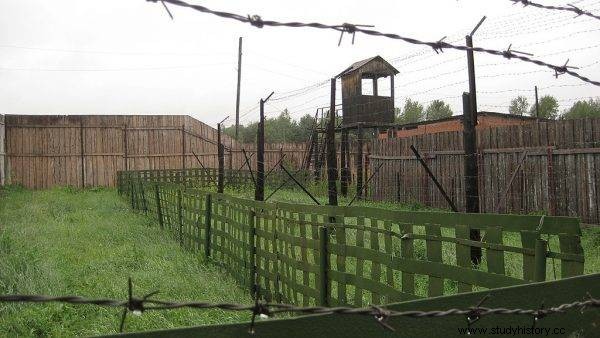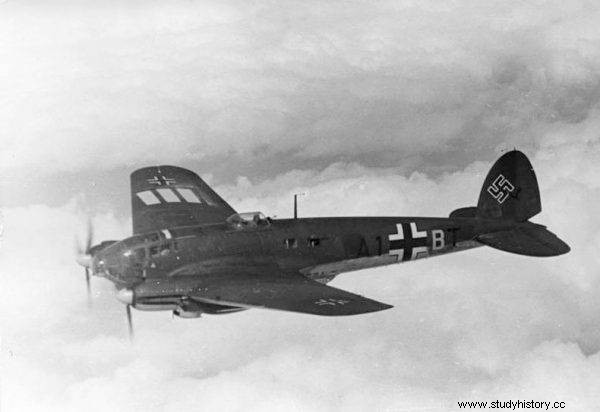On February 9, 1945, 10 Soviet prisoners of the Usedom camp escaped from captivity, kidnapping a Heinkel He 111 bomber. The group was headed by fighter pilot Mikhail Devyatayev. When taking the plane into the air, the refugees did not suspect that one of the greatest secrets of the Third Reich was on board.
This spectacular escape shocked the Germans. Those responsible for the security of the camp were punished - the commandant was sentenced to death. Supposedly, Hitler himself recognized Devyatayev as his personal enemy. Attempts were made to track down the machine, but the pilot managed to confuse the enemy and the plane landed safely in Red Army-controlled territory.
Forerunners of Devyatayev
The feat of Devyatayev and his companions is mistakenly considered the only escape on board the plane. In fact, about 10 pilots did it, but official propaganda kept their names secret. This is because, according to the Stalinist interpretation, every Soviet citizen who was captured should be considered a traitor . This patch was made by pilots who managed to reach "their people". And since the authorities considered them to be "enemies of the people", they did not deserve any mention in the state mass media.
One of the heroic pilots was the junior lieutenant Nikolai Loshakov, whose plane was hit by the enemy on May 27, 1943. The aviator jumped with a parachute and thus saved himself. He was sent to the camp and, together with his friends, began to plan an escape, but someone handed him over to the Germans, who started to persuade Łoszakow to cooperate. He came to the conclusion that he would accept the enemy's offer, and when he gained their trust, he would hijack the plane and flee.

Instead of fame, the refugees were waiting for a filter camp, where they were tortured, as a result of which Dienisiuk confessed to treason. On December 4, 1943, the mechanic was sentenced to 20 years in labor camps (illustrative photos).
Nikolai started working at the airport in the Pskov region, where he met another Soviet prisoner of war - mechanic sergeant Ivan Dienisiuk, also dreaming of escape. One day, men noticed a light twin-engine plane on the runway, in which there was no pilot. They sneaked into the machine and took to the air. They landed in the Nizhniy Novgorod region.
But instead of fame the fugitives waited for a filter camp where they were tortured as a result of which Dienisiuk confessed to betraying his homeland. On December 4, 1943, the mechanic was sentenced to 20 years in labor camps, and Łoszakow - to three. The first was released in 1951, the second - in 1945.
A risky plan…
Mikhail Devyatayev was taken prisoner on July 13, 1944. He was an experienced pilot:he started fighting on the first day of the war, on June 22, 1941, and on June 24, he shot down a German plane. In September of that year, he was badly injured in his leg, but after a long convalescence, he managed to return to the front. On the day he became a prisoner of war, he had 9 enemy planes shot down.
The pilot was first transported to the camp in Ruda Pabianicka near Łódź, then transferred to Sachsenhausen. He was supposed to be shot there, but camp friends saved Mikhail's life by giving him the dog tag of the deceased prisoner - teacher Grigory Nikitenko. It was under this name that Diewiataev ended up in the Karlshagen I camp on the island of Usedom. There was also the Peenemünde center, where the Germans worked on the V1 and V2 missile building program.

Mikhail Diewiatajew was first sent to the camp in Ruda Pabianicka near Łódź, then transferred to Sachsenhausen. He was supposed to be shot there (in the photo Sachsenhausen prisoners, pictorial photo).
In the new place, Mikhail befriended Lieutenant Ivan Krivonogov and artilleryman Vladimir Sokolov, who initiated him in their escape plan. They were going to leave Usedom by boat. Devyatayev proposed the hijacking of the plane instead.
… and its implementation
Dieviatayev, Sokolov, and Krivonogov gradually began selecting reliable fellow prisoners working near or at the airport. Mikhail himself increasingly turned around the place where there were planes that - due to their long service life or serious damage - had not been used. This was how the pilot got to know the cockpit equipment.
On the morning of February 8, 1945, Diewiataev recorded that after a few rainy days the sun finally appeared, which promised good visibility. Devyatayev and his companions were closely watching the airport. When the mechanics went to the cafeteria for dinner, Krivonogov killed the guard, and then he and Devyatayev approached the Heinkel He 111 on the runway . The pilot tore the lock and climbed into the cockpit, and Kriwonogov unveiled the engines, but the plane had no batteries. In a matter of minutes, they managed to find a battery cart and lead it to the bomber. The members of the group climbed in and Devyatayev loudly announced, "Now we are going to go home."

When the mechanics went to lunch at the cafeteria, Krivonogov killed the guard, and then he and Dieviatayev approached Heinkel He 111 on the runway (illustrative photo).
But Mikhail had a problem lifting the plane from the ground, which should not come as a surprise, because this was the first time the pilot sat at the controls of such a machine. He only managed to take off the second time. It was 12:15 pm. The Germans began to pursue the bomber, but ... they failed to find it in the skies. Other German airfields were notified of the escape, but Soviet POWs were lucky and landed among "their".
Not in glory and glory
As Devyatayev himself recalled bitter years later, in the Soviet Union, "no one was delighted with me or my friends." This is because it was suspected that they were recruited by the Germans and sent to the USSR as spies . There was a fear that the entire group would be accused of treason.
They were saved by the fact that on board the German bomber there was super-secret equipment used during the production of V1 and V2 (unfortunately the details of these devices were not declassified by the Soviet side). After the end of the war, Mikhail Devyatayev, accompanied by engineers and military personnel, left for the island of Usedom.
Recognition for Dieviatayev and his colleagues came in 1957. Then they were awarded with state orders, and the pilot himself became a Hero of the Soviet Union.
Bibliography:
- В. Звягинцев, Невероятные случаи побега из фашистского плена. https://pravo.ru/process/view/29261/
- Д. Окунев, "Побег из ада":как летчик Девятаев угнал самолет фашистов. https://www.gazeta.ru/science/2020/02/08_a_12950767.shtml
- М. Черепанов, Тайна подвига Девятаева. https://kazved.ru/news/society/06-07-2012/tayna-podviga-devyataeva-4702858
